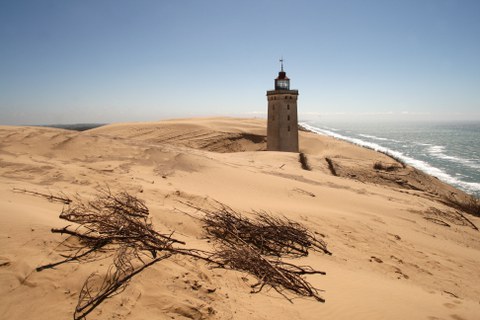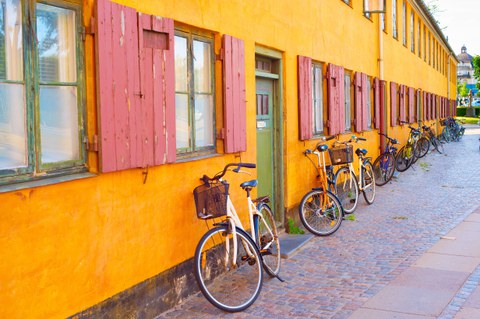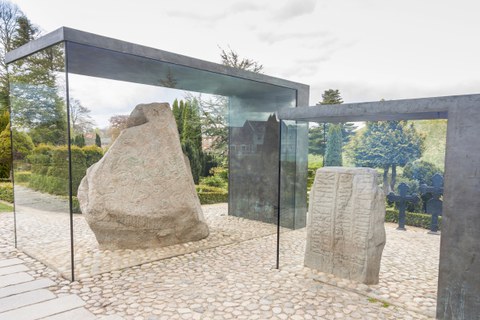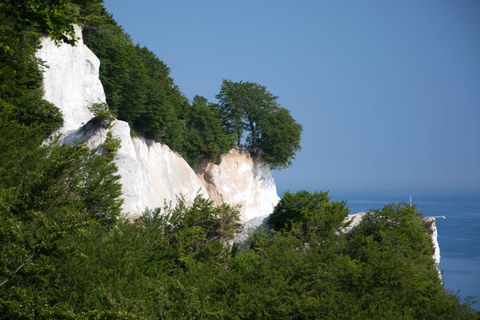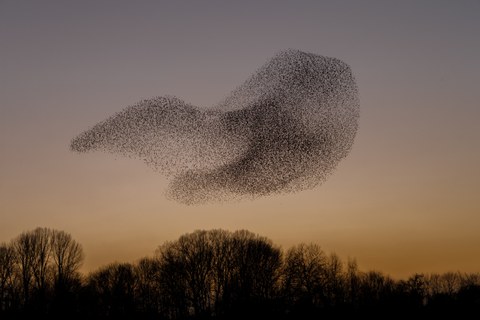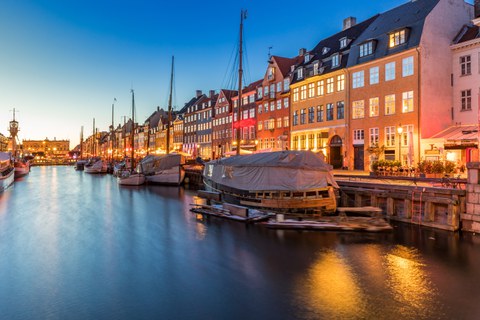Partner Country of the Month July 2022: Denmark
Once the land of the Vikings, today the land of cycling - this month we're looking at our northern neighbour Denmark. The smallest and southernmost part of Scandinavia is considered one of the happiest countries in the world. In worldwide surveys on life satisfaction, it regularly ranks in the top 3. But why is that? The Danish sense of community and a high level of trust in society certainly play their part. So do curious traditions and the typical cosiness of hygge. Perhaps it's also because in island-rich Denmark, you’re never more than 52 km away from the sea?
With the "Partner Country of the Month" campaign, we want to shine a spotlight on the wide diversity of countries, regions and partner universities of TU Dresden that our students can explore during a semester abroad.
Table of contents
General facts and figures about Denmark
Capital: Copenhagen
Population: 5.9 million (2022)
Official language: Danish
National holiday: No official one, de facto 5th June (day of the constitution)
Currency: Danish krone (DKR)
You can find further facts, figures and information on Wikipedia, on denmark.dk, or e.g. on Statistics Denmark.
Language matters
- Hello! – Hej!
- How are you? – Hvordan har du det?
- What is your name? – Hvad er dit navn?
- My name is … – Mit navn er …
- Can you help me, please? – Kan du hjælpe mig, tak?
- I would like to have … – Jeg vil gerne have …
- Thank you – Tak.
- Bye! – Hej hej!
Danish is closely related to Norwegian and Swedish - so closely that there are linguistic discussions whether the three languages are not rather three dialects of the same language. Danish shares over 95% of its vocabulary with Norwegian and 85-90% with Swedish. If you have participated in a TUDIAS Swedish course, you will therefore also have an easier time learning Danish. While the languages are almost completely mutually intelligible in writing, spoken language is more difficult due to the different ways of pronunciation.
Danish is also related to German and English. In fact, many words of Danish origin can be found in the English language, like sky, anger, leg and root. The reason for this is that in the early Middle Ages, Vikings conquered part of England, settled and left their traces in the vocabulary and also in many place names.
Nowadays, most Danes speak English very well. Therefore, you don’t need to fear communication problems if you’re lacking Danish language skills. Our partner university offers a lot of courses in English and you can study completely in English during your exchange semester. But of course, speaking a little Danish will earn you a lot of sympathy. In Dresden, you can study Danish at the VHS.
Did you know that ....?
- Copenhagen is considered the most bicycle-friendly city in the world? A full 63% of the population use bicycles for their daily commute. Denmark's capital has been designed for people, not cars, for decades. Among other things, a well-planned, extensive network of cycle paths offers favourable conditions. This is where the Copenhagenize Index stems from, which rates the cycling-friendliness of major cities worldwide. Denmark even has a cycling embassy that passes on city planning knowledge. Of course, you should still pay attention to your own safety ;)
- Lego is a Danish invention? The name is derived from leg godt, meaning "play well". Next to the original factory in Billund you can find the world's first Legoland - nowadays the biggest tourist attraction in Denmark outside Copenhagen.
-
unmarried people in Denmark get tied up and dusted with cinnamon on their 25th birthday? The amount and method of application vary from emptying a small bag of cinnamon over the birthday person's head to large bags or even cinnamoning by fire extinguisher. For those who are still unmarried on their 30th birthday, there’s an upgrade to pepper...
-
there is a word in Danish that consists of only one letter? Ø means island.
-
Denmark's highest "mountain" is just 170 meters high? It was debated for a long time whether ancient burial mounds or other man-made elevations can also be taken into account when determining Denmark's highest point. In the end, only natural elevations were counted.
-
Greenland and the Faroe Islands are officially part of the Danish Kingdom? Both are largely under self-government and have independent legal systems. Greenland, the largest island in the world, makes up 98% of the kingdom's area but is very sparsely populated. There is a wish for full independence in both territories, but certain economic factors also count in favour of remaining.
-
Denmark has a special relationship with its flag? The Dannebrog is one of the oldest flags in the world and serves as essential decoration for many occasions. For example for birthdays – the birthday cake gets decorated with lots of little Danish flags, and if you congratulate by text message, it’s customary to include a few flag emojis. It’s also not unusual to have a flagpole in front of your house. It needs to be handled correctly, though. If you don't want to fly the flag for the devil, you have to take it down at sunset or keep it illuminated at night.
Cooperation with TU Dresden
You can find all cooperations of TU Dresden in our database. Have a look at the experiences of our previous exchange students at Questionnaires. Professors at your faculty may have direct contacts to your partner university of choice and can advise you.
Our cooperations with Danish universities are part of Erasmus+. Here you can find the contact persons and application deadlines for your faculty.
Our Danish partner universities via Erasmus+
- University of Copenhagen
- Forest Science
- IT-Universitetet i København
- Business Administration and Economics
Don't miss...
The runestones of Jelling. These are two huge stones from the 10th century, decorated with bas-reliefs and runes. On the smaller one, the first mention of the name Denmark is found. The larger stone was erected by King Harald Bluetooth, who united Denmark and Norway. As a connecting element, so to speak... that’s why Bluetooth was named after him and is symbolized by a blend of the runes for H and B. The stones and their associated museum can be visited free of charge and are a UNESCO World Heritage Site.
Møns Klint. The impressive chalk cliffs on the island of Møn are up to 100 meters high. At the top, a hiking path trailing between gnarled old trees offers great views. There is an associated geocentre, and close to it you can find stairways going down to the beach. With a bit of luck, you can even find fossils there. Camping is a convenient accommodation on Møn. Other things to visit on the island include salt marshes and Neolithic graves.
Aarhus Festuge. This colourful, 10-day arts and culture festival in our partner city takes place every year in August and September. It’s one of the largest cultural events in Northern Europe. There is something for everyone, from various dance workshops and shows to scavenger hunts through Aarhus, magic and art performances and a food festival. What's more, many of the events are free of charge.
Ribe and the Black Sun. Every year in spring and autumn, huge flocks of starlings migrate over the Danish Wadden Sea, creating Sol Sort, the Black Sun. Hundreds of thousands of birds fly in changing formations and patterns, sometimes so closely together that they seem to block out the sinking sun. You can easily observe this phenomenon near Scandinavia's oldest city, Ribe. It’s also worth a visit for its museums and the Living History Ribe VikingeCenter.
Copenhagen. There is a lot to discover in the Danish capital. Nyhavn with its cute colourful little houses next to the canal. Various indoor and outdoor flea markets. The Freetown Christiania, an alternative autonomous community tolerated by the state and full of street art. Also worth a visit: the Renaissance castle Frederiksborg near Copenhagen.
Let's get cooking...
In Denmark, people eat cold food for lunch and hot for dinner. Smørebrød, buttered bread, is the typical lunch dish. The simple name is deceptive, however, because smørebrød is usually artfully topped with a variety of ingredients. Traditional Danish cuisine uses a lot of meat, fish and potatoes. Hot dogs are a very popular street food. In coastal towns, you can often find smokehouses and snack bars selling fish.
For those with a sweet tooth, Denmark offers a lot of sweet pastries, like marzipan puff pastry and delicious cinnamon twists. Liquorice is very popular, even as a flavouring for ice cream or beer. A typical dessert is red fruit jelly, rød grød med fløde – a very special name. It’s such a tongue twister that you can quite reliably tell from it whether someone speaks Danish as a mother tongue or as a foreign language.
Øllebrød – Bread and Beer Soup
Bread and beer are typically German? That may not be wrong, but this Danish dish goes one better and combines both into a sweet breakfast dish! Øllebrød is a very old dish, dating back to the time of the Vikings or even before. However, back then people used to eat it unsweetened. Øllebrød probably originated as a way of using up old and stale bread. It still serves that purpose very well today. Try it out!
Ingredients for 4 servings:
- 350 g rye bread without grains, in slices
- 0.5 l water
- 2 bottles of malt beer (330 ml each)
- 1 cinnamon stick
- grated peel of one organic orange (or lemon)
- 85 g sugar
- 1 tbsp. freshly squeezed orange juice (or lemon juice)
- To serve: whipped cream or milk
Preparation:
1. Cut the rye bread (with the crust) into small cubes. Put them in a pot and add water, malt beer, the cinnamon stick and orange zest. Leave to infuse for about 10 minutes.
2. Bring the mixture to a boil, then cover it and let it simmer over low heat for about 10 minutes. Stir occasionally. The bread should become completely soft.
3. Add the sugar and orange juice and season to taste.
4. Remove the cinnamon stick. Serve Øllebrød with whipped cream or a little milk.
(Many thanks to dk-kogebogen.dk!)
Contact
Have you had a great time in Denmark? Do you have tips for places and experiences that are not to be missed? We would be happy to share your experiences here, on social media or, if you want, in information events for other TUD students. Get in touch with us:
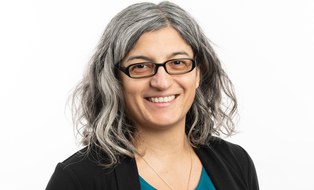 © Sven Ellger/TUD
© Sven Ellger/TUD
Advice on studying abroad
NameMs Federica Serra
Infocenter/ Study abroad; TUDworldwide: America
Send encrypted email via the SecureMail portal (for TUD external users only).
Visiting address:
Fritz Foerster Bau, Office 161 Mommsenstraße 6
01069 Dresden
Postal address:
TUD Dresden University of Technology International Office
01062 Dresden
Office hours:
- Tuesday:
- 09:30 - 11:30
- 12:30 - 14:30
- Thursday:
- 09:30 - 11:30
Please register at the SCS (FOE, floor 0).
Looking for first-hand information?
Would you like to know more about Denmark? Ask our alumni ambassadors - TUD alumni who are active in many countries around the world and can give you information and advice for your stay abroad.
Getting in touch is very easy: On this interactive world map, markers indicate the cities where our alumni ambassadors live. There is a short profile with contact information for each ambassador.
Partner Countries Archive
Have you missed a partner country? No worries! Here you can read up on all articles.
|
Europe (Erasmus+) |
|
|
Africa |
|
|
America |
|
|
Asia |
|
|
Australia and Oceania |
|

